OSI Model – Layers, Characteristics and Functions
We offer you a brighter future with FREE online courses - Start Now!!
OSI Model is a structure to define the system of networking. It allows the transfer of data from one device to another over a network. Charles Bachman at Honeywell Information Systems was the one to suggest the idea of the OSI model. Initially, it wasn’t accepted well because of Internet protocol suite incompatibility. But over time, it became quite famous with international recognition. The history of the OSI model dates back to the early 1970s.
The International organization of Standardisation took an initiative to conduct a program for methods of networking in the 1970s. The United Kingdom undertook an Experimental Packet Switched System in 1973 that concluded the need for defining the higher-level protocols. The OSI model came out in 1983 intending to provide detailed specifications of actual interfaces. But eventually, in 1984, ISO announced this model as an international standard.
It was after this that large IT companies and organizations started using this model widely. It became prominent with its layer structure and efficient characteristics. Let us look at them in detail now –
Characteristics of OSI Model
- OSI Model has two layers – upper layers and lower layers.
- The upper layer deals with application issues using the software.
- Application layers are nearest to the users.
- The layer above another one refers to the upper layer.
- The lower layer deals with data transport using hardware and software.
- Lowest layer is the physical layer as it deals with information placed on the physical medium.
Why OSI Model?
- Allows users to understand network communication.
- Different network layers allow easier troubleshooting.
- The development of new technology is easier to understand through this model.
- Comparison of primary functional relationships is possible on various layers.
How data flows through the OSI model?
For humans, the information passes from one network to another. But in reality, it passes through seven layers of the OSI model in both sending and receiving devices. If a person sends an email, it first reaches the application layer, where they choose a protocol and pass it to the presentation layer. The presentation layer compresses it and sends the data to the session layer for communication initialization.
The transportation layer is the next where the data segments and reaches the network layer for packet breaking. The data link layer breaks it further into frames and delivers it to the physical layer. Here, data converts into a bitstream of 1s and 0s and reaches the physical layer of the receiving device. The same process will begin but from the bottom layer till the receiver opens the email.
7 Layers of the OSI Model
1. Physical Layer
It is the last layer of the model responsible for preparing physical devices in the network for data acceptance. It can also terminate the connection between two nodes of a network.
This layer takes in raw data which goes to higher layers later. It also converts digital bits into other signals.
Functions of Physical Layer of OSI Model
- It enables bit synchronization using a clock that controls both sender and receiver.
- It also controls the transmission rate or several bits sent per second.
- This layer decides the ideal topology type for node arrangement in a network.
- It decides the transmission mode between the devices.
- The physical consist of – Hub, Repeater, Modem, and Cables.
This layer allows access to get the data by breaking it into frames for easier analysis. This ensures that data is error-free and reaches the next layer in time. It sends data in the form of packets. It has two sub-layers –
Logical Link Control is for transferring the packets to the next layer by identifying the protocol address from the header. Media Access Control Layer creates a link to the network’s physical layer. This by obtaining the receiver’s address using Address Resolution Protocol.
Functions of Data Link Layer of OSI Model
- It frames the data in a way that is meaningful to the receiver using special bit patterns.
- It adds physical addresses of both sender and receiver in every frame.
- This layer controls error by detecting and retransmitting frames.
- It controls the flow by calculating the amount of data before receiving it.
- It determines the extent of control devices have in a given time.
- Network Interface Card handles this layer using devices like switch & bridge.
It is the network controller layer responsible for transferring data from one node to another in a network. Every node has a unique address and this layer reads them to send data to the correct destination. It sends data in packet form while later connects after processing.
Functions of Network Layer of OSI Model
- It formulates a connection between different devices in a layer.
- It decides the ideal route for information transfer from source to destination. This process is known as routing.
- This layer follows an addressing scheme to find the correct IP address universally.
- It breaks information into packets using internet protocol.
The transport layer manages the delivery of packets and is the heart of the OSI model. It monitors the data, segmentation/desegmentation, and controls error. This layer starts from TP0 and continues till TP4 for fragmentation or reassembling data. It follows two protocols –
a. Transmission Control Protocol
A standard protocol for internet communication between hosts. It divides data into smaller segments that travel using multiple internet routes to reach the destination. It also corrects the order of the packets at the receiving end.
b. User Datagram Protocol
It is a transport layer protocol that is quite unreliable. The receiver does not receive any acknowledgment and the sender doesn’t even try to send it.
Functions of Transport Layer of OSI Model
- It accepts data and breaks into smaller units while sending. And it reassembles the data while receiving.
- It follows a service point address to deliver the message to the correct process.
- This layer provides connection-oriented service by establishing a connection, transferring data, and terminating the process. It is secure as the sender receives an acknowledgment of data delivery.
- It also provides connectionless service by using data transfer. The receiver doesn’t get an acknowledged receipt but the process is faster.
The number of computers in the network establishes a connection in this layer. It also takes care of establishing, managing, and terminating remote and local applications. They can also choose to terminate a complete session/transmission.
Functions of Session Layer of OSI Model
- The layer can easily process the establishment, use, and termination of a connection.
- It adds checkpoints as synchronization points into the data for identifying the error easily and avoiding data loss.
- Two systems can also interact with each other in half-duplex or full-duplex.
This layer is responsible for converting data into semantics understood by an application. It formats the data by compression, encryption, etc., and then sends it further to other layers. It is the translator of the networking model.
Functions of Presentation layer of OSI Model
- It allows the translation of operating languages. For example, translation of ASCII to EBCDIC.
- This layer encrypts data into a code as ciphertext and decrypts data back into plain text. It is done by using a key value.
- It compresses data and reduces bits needed for network transmission.
This is the layer where users interact with the data. The layer identifies communication partners that will allow data transmission for an application. Some of the applications are – Browsers, Messengers, etc. Desktop Layer is another word for this layer.
Functions of the Application layer of OSI Model
- File management by allowing users to access, retrieve and manage the files on a remote computer.
- Allows users to go ahead with email forwarding and storage.
- Provides distributed database sources and global information about several objects.
The TCP/IP uses the last three layers as just one Application Layer. These are the Upper Layers or Software Layers. The data link and physical layer make up the Network Access Layer in TCP/IP. Though now TCP/IP has become the most commonly used model of networking.
Interaction Between OSI Model Layers
The data transfer from one device to another goes through each of the OSI layers. Each of them has a connection and needs to communicate to function. Every layer interacts with two layers, its subordinate and peer layer. For example – the data link layers will coordinate with the network layer to get the information. And then it will pass on the information to the physical layer.
Difference Between OSI and TCP/IP
| OSI Model | TCP/IP model |
| There is a clear distinction between interfaces, protocols, and services. | There is no clear distinction between them. |
| The network layer defines routing standards and protocols. | It has only an internet layer. |
| Physical and data links are present to define the function of the bottom layer. | It uses only the link layer. |
| The transport layer is connection-oriented. | It is both connection-oriented and connectionless. |
| Datalink and physical layer are separate. | Datalink and physical layer together make up the single host-to-network layer. |
| 5 bytes is the minimum size. | 20 bytes is the minimum size. |
Advantages of the OSI Model
- Enables standardization of hardware devices.
- The standardization reduces complexity in interfaces.
- It is useful for facilitating modular engineering.
- Ensure interoperable technology and evolution acceleration.
- The protocols are replaceable with technology changes.
- Supports connection-oriented and connectionless services.
Disadvantages of the OSI Model
- The protocol fitting is very long and dull.
- It is only useful as a reference model.
- It doesn’t follow a particular protocol.
- Many layers have similar or same services.
- These layers can’t function parallelly and need to wait for information from the previous layer.
Summary of OSI Model Layers
| Name | Function | Protocols |
| Application | Gives access to network resources. | SMTP, HTTP, FTP, POP3, SNMP |
| Presentation | Responsible for translating, encrypting, and compressing data. | MPEG, ASCH, SSL, TLS |
| Session | Ensures establishment and termination of the session. | NetBIOS, SAP |
| Transport | Enables data transport from source to destination machine. | TCP, UDP |
| Network | Provides internetworking and packet movement. | IPV5, IPV6, ICMP, IPSEC, ARP, MPLS. |
| Data Link | Organize bits into frames. | RAPA, PPP, Frame Relay, ATM, Fiber Cable, etc. |
| Physical | Responsible for providing mechanical and electrical specifications. | RS232, 100BaseTX, ISDN, 11. |
Conclusion
One of the most important topics of basic computer aptitude is the OSI model. It was a very prominent model for a networking system but with evolution, newer models have come up. But it still holds relevance as the newer models are born out of.
Many of its elements and functions are still present in a networking system. Thus, it is advisable for exam giving students to read about the basics properly. None of the topics should be taken lightly as many aptitudes and competitive exams ask such topics in paper.
If you are Happy with DataFlair, do not forget to make us happy with your positive feedback on Google
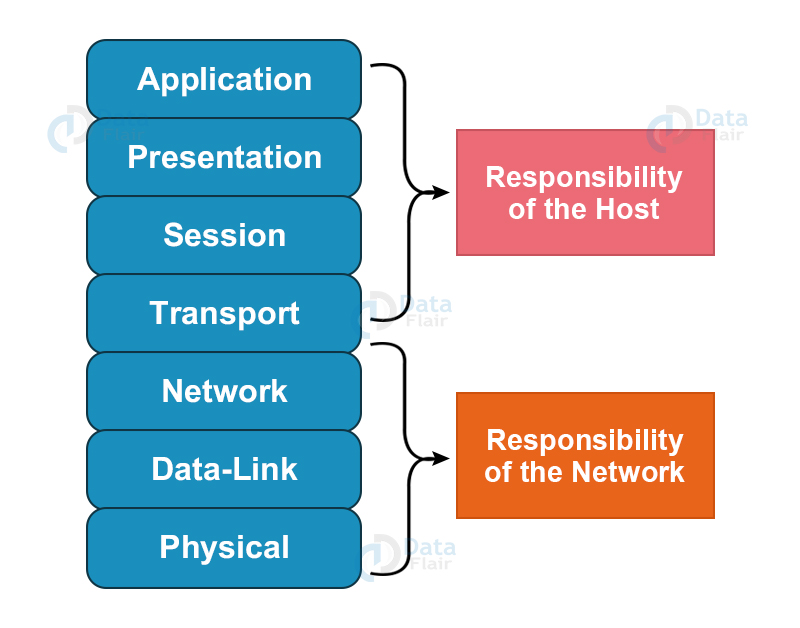
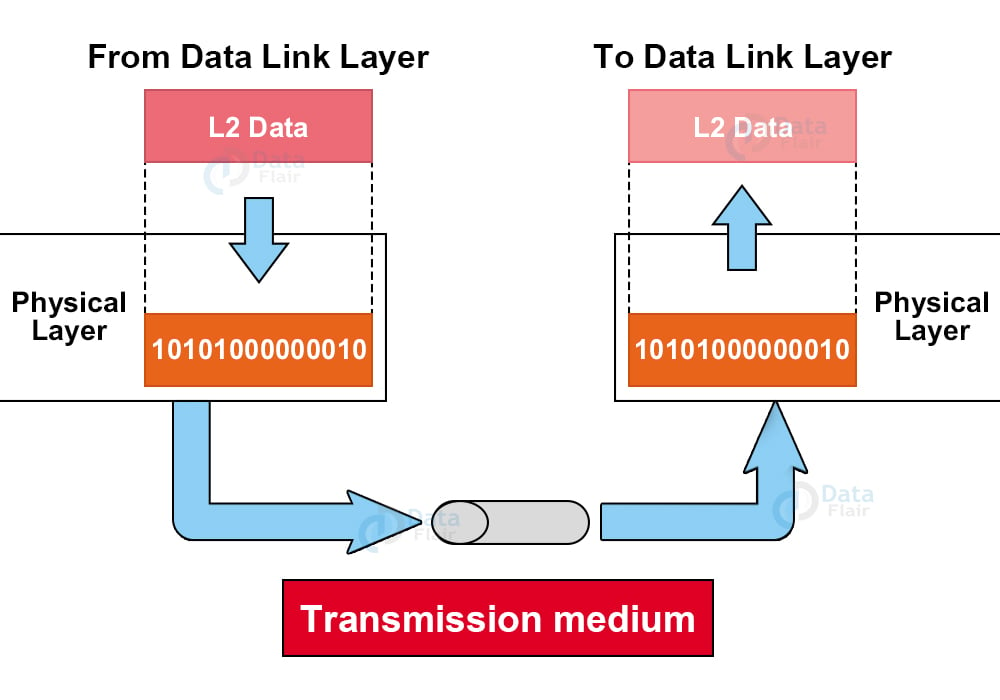
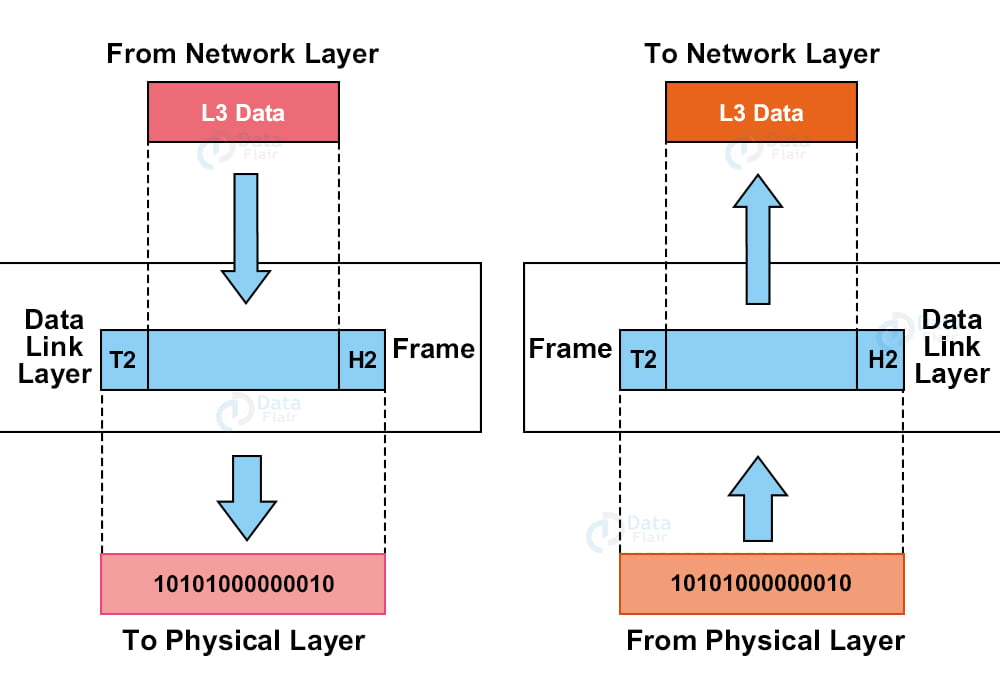

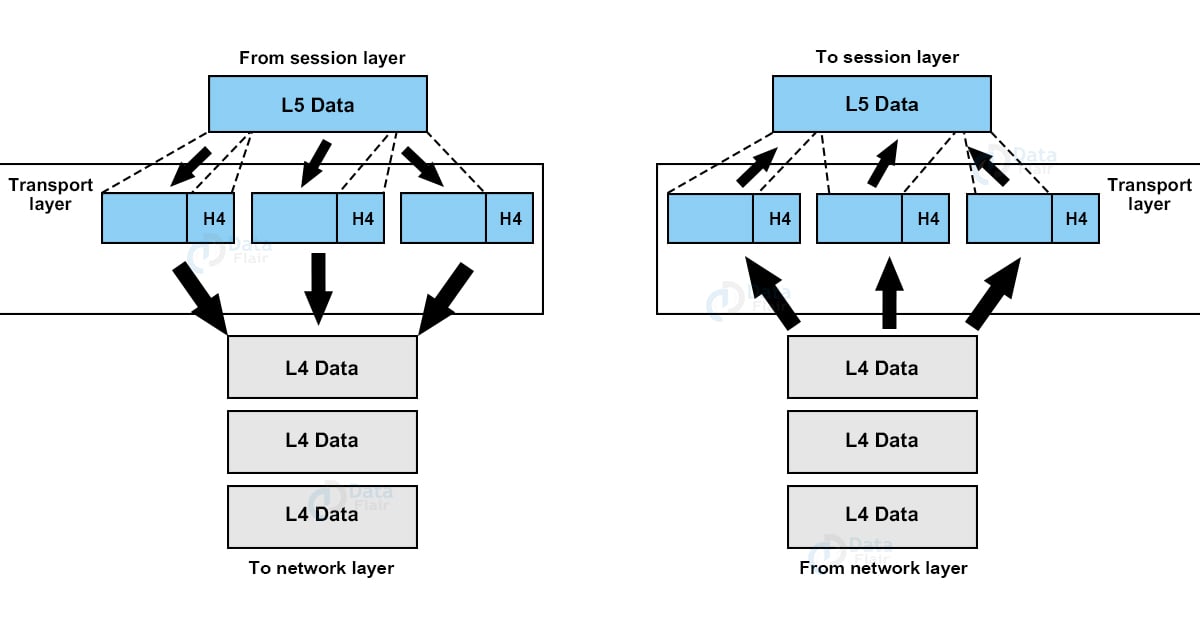

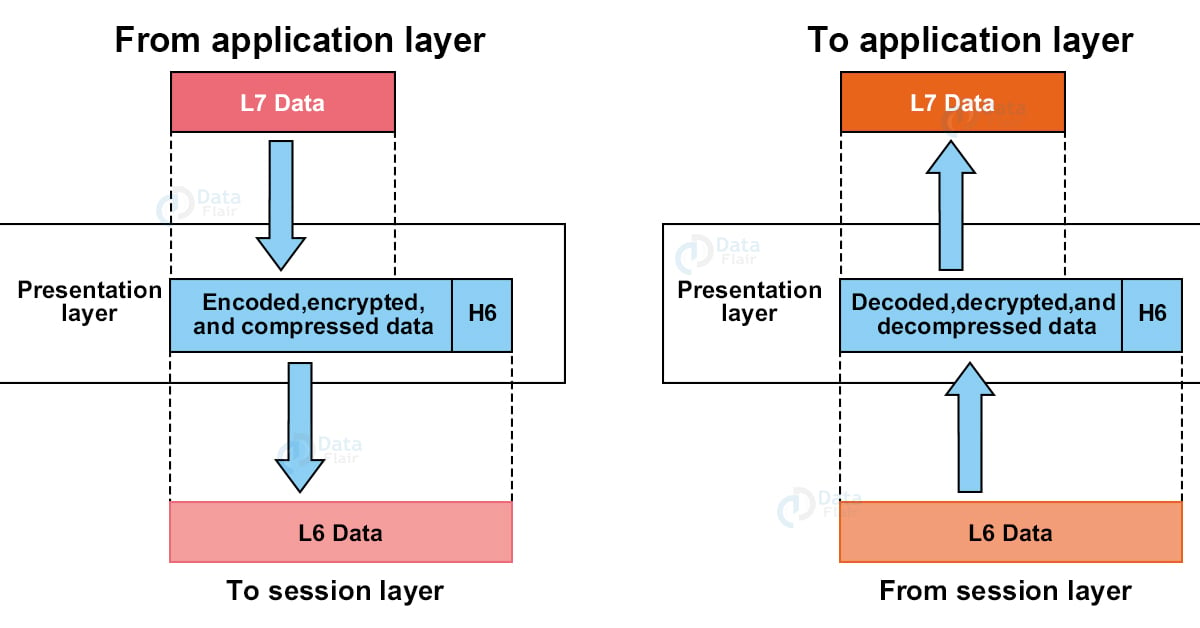

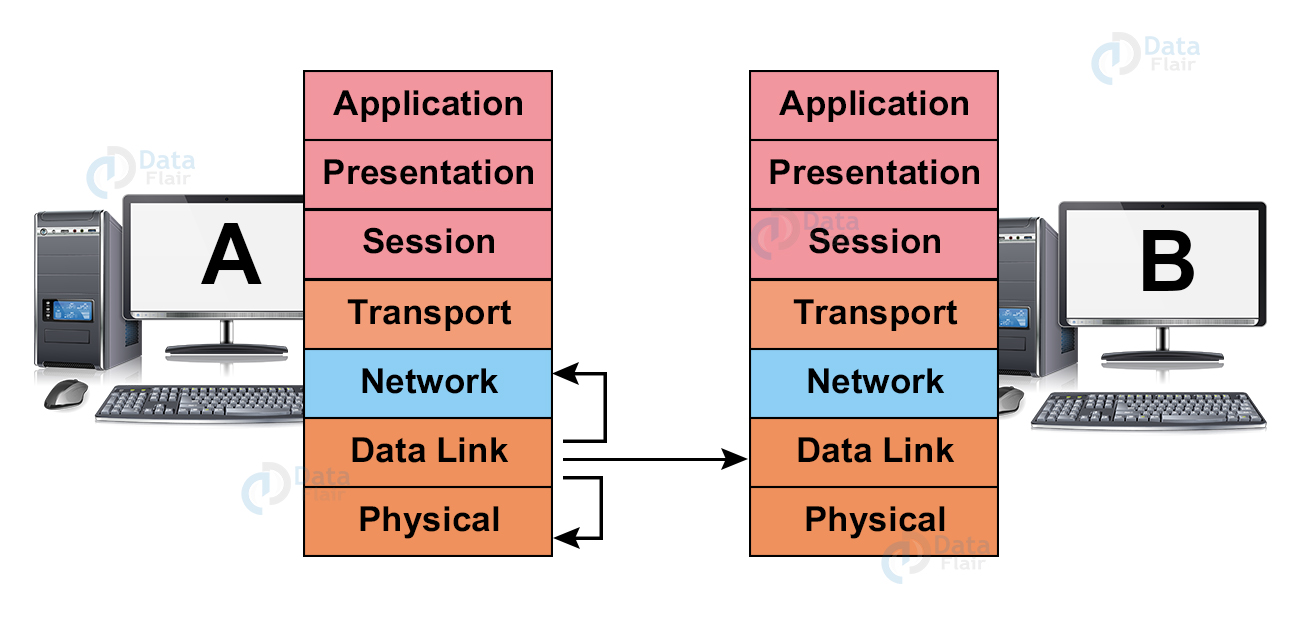


I am grateful 🙏 that l understand this topic which I didn’t understand in my class
very lucid , clear & vigorous text of data transmission
Like in the other comments I read here, I did not understand this while in class. Now that I have it here (and in screenshot) I can refer to it and have gained a better understanding from it. I’m doing great in the classes that have expanded upon the lessons of the OSI model. Without the knowledge, being the foundation, my house was sure to crumble. It is IMPOSSIBLE to expand upon a subject that you do not understand.